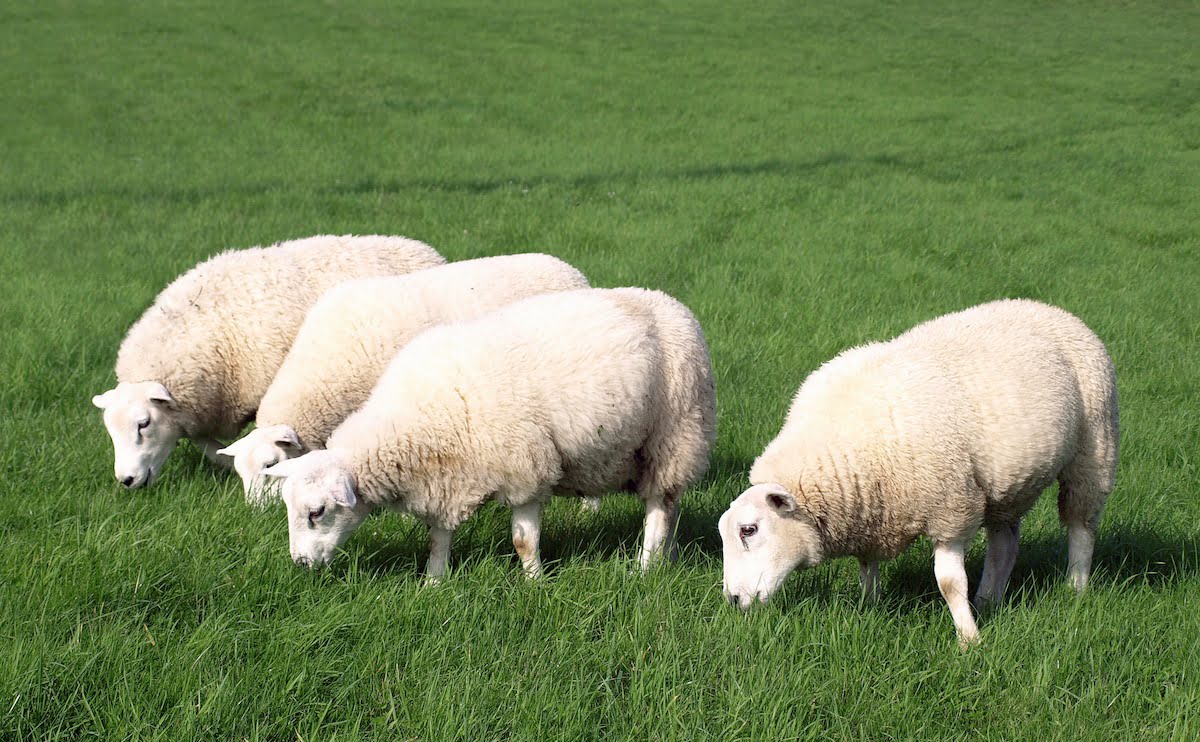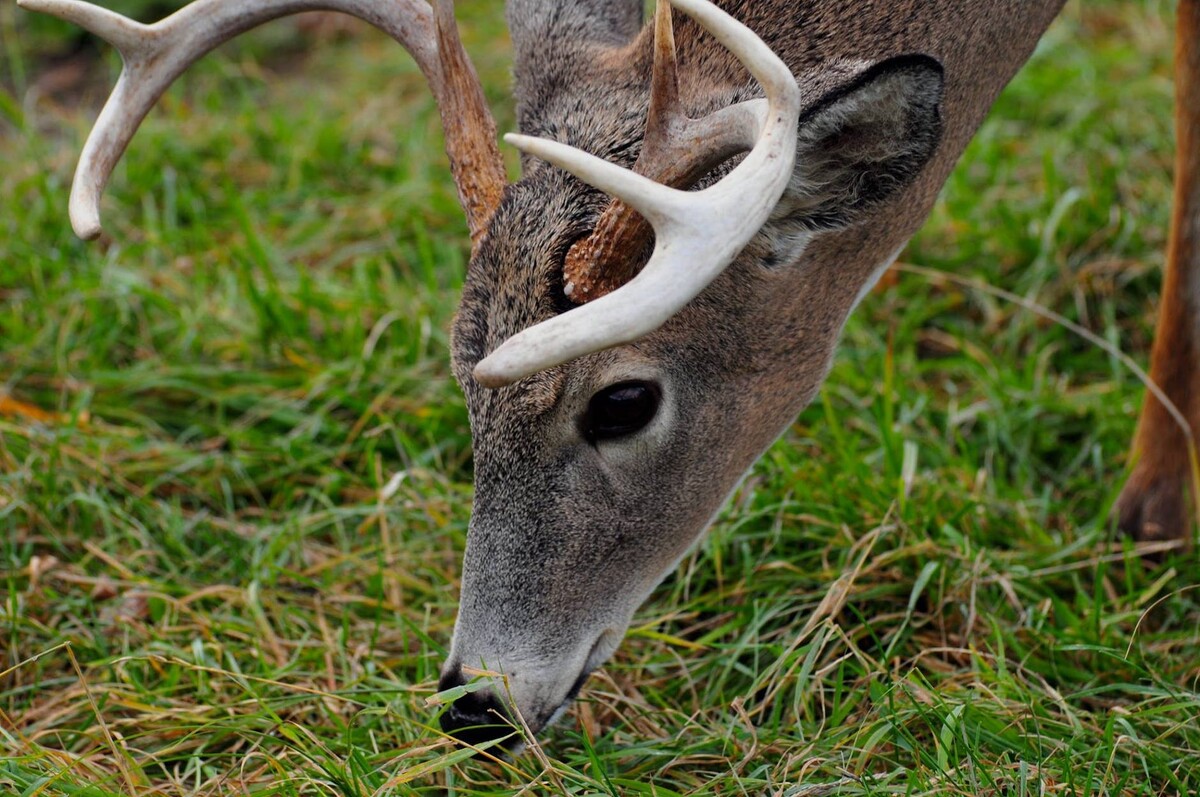Home>Gardening & Outdoor>Landscaping Ideas>Why Do People Eat Grass


Landscaping Ideas
Why Do People Eat Grass
Modified: August 17, 2024
Discover the reasons why people eat grass and how it can be beneficial for your landscaping ideas. Explore the connection between grass consumption and innovative landscaping techniques.
(Many of the links in this article redirect to a specific reviewed product. Your purchase of these products through affiliate links helps to generate commission for Storables.com, at no extra cost. Learn more)
Introduction
Eating grass may seem like an unusual and perplexing behavior to many, yet it is a phenomenon that has intrigued and puzzled people for centuries. The act of consuming grass, typically associated with herbivorous animals, has also been observed in humans, sparking curiosity and prompting questions about the reasons behind this behavior. In this article, we will delve into the multifaceted aspects of why people eat grass, exploring historical, cultural, nutritional, psychological, emotional, and environmental factors that contribute to this intriguing practice.
The act of consuming grass, whether intentional or accidental, has been documented in various cultures and historical contexts, often carrying symbolic or practical significance. Understanding the motivations behind this behavior requires a comprehensive examination of the diverse factors that influence human behavior and dietary choices. By exploring the historical and cultural dimensions, as well as the nutritional, psychological, emotional, and environmental considerations, we can gain a deeper understanding of the complex reasons why people eat grass.
As we embark on this exploration, it is important to approach the topic with an open mind and a willingness to uncover the underlying motivations that drive this behavior. By shedding light on the diverse aspects of grass consumption, we can gain valuable insights into the intricate relationship between humans and their environment, as well as the cultural and individual practices that shape human behavior. Through this exploration, we aim to unravel the enigma of why people eat grass, shedding light on a practice that continues to captivate and intrigue both scholars and the general public alike.
Key Takeaways:
- People eat grass for historical, cultural, nutritional, psychological, emotional, and environmental reasons, reflecting the complex interplay between human behavior and dietary choices.
- Grass consumption offers surprising nutritional benefits and reflects psychological, emotional, and environmental factors, showcasing the intricate relationship between humans and their environment.
Read more: Why Do Lions Eat Grass
Historical and cultural reasons
The consumption of grass holds a significant place in the historical and cultural tapestry of various societies. Throughout history, the act of eating grass has been intertwined with diverse cultural practices, traditions, and symbolic meanings. From ancient rituals to contemporary customs, the historical and cultural reasons behind grass consumption offer a fascinating glimpse into the rich tapestry of human behavior and societal norms.
In many traditional societies, the consumption of specific types of grass or plants has been deeply rooted in ceremonial and ritualistic practices. These rituals often carry symbolic significance, representing spiritual connections, purification, or rites of passage. For example, in certain indigenous cultures, the ingestion of specific grasses or herbs is a central element of healing ceremonies, symbolizing a spiritual communion with nature and the divine. The act of consuming grass in these contexts is imbued with cultural meaning, serving as a conduit for spiritual experiences and communal bonding.
Furthermore, historical accounts and anthropological studies reveal instances where grass consumption was associated with survival and sustenance during times of scarcity. In times of famine or food shortages, people turned to unconventional sources of sustenance, including various types of grasses and plants. This adaptive behavior underscores the historical significance of grass consumption as a means of survival, reflecting the resourcefulness and resilience of human communities in the face of adversity.
Cultural practices and traditions also play a pivotal role in shaping attitudes towards grass consumption. In some cultures, the consumption of specific grasses is integrated into culinary traditions, where certain varieties are used in traditional dishes or beverages. These culinary practices are often steeped in cultural symbolism and regional identity, reflecting the deep-rooted connections between food, culture, and heritage.
Moreover, the historical and cultural dimensions of grass consumption extend to folklore, mythology, and traditional beliefs. In folklore and mythology, the symbolism of grass is often intertwined with themes of fertility, renewal, and the cycles of nature. This symbolic significance has permeated cultural narratives and traditions, influencing the perceptions of grass consumption in various societies.
By examining the historical and cultural reasons behind grass consumption, we gain a profound appreciation for the intricate interplay between human behavior, societal norms, and cultural practices. The diverse historical and cultural dimensions of grass consumption offer a window into the rich tapestry of human experiences, beliefs, and traditions, underscoring the multifaceted nature of this intriguing phenomenon.
Nutritional benefits
The consumption of grass, often regarded as unconventional or even perplexing, may hold surprising nutritional benefits for individuals in certain circumstances. While grass is not typically considered a staple food for humans, it can provide essential nutrients and potentially serve as a source of sustenance in specific situations. Understanding the nutritional benefits of grass consumption requires a nuanced exploration of its composition and potential contributions to human dietary needs.
Grasses, including various species such as wheatgrass, barley grass, and alfalfa, are rich in vitamins, minerals, and phytonutrients that can offer valuable nutritional support. These plants contain an array of essential nutrients, including vitamin C, vitamin K, vitamin E, and various B vitamins, which are vital for overall health and well-being. Additionally, grasses are a source of chlorophyll, a green pigment with antioxidant properties that may contribute to detoxification and immune support.
Furthermore, grasses can provide a significant source of dietary fiber, which plays a crucial role in digestive health and may contribute to a feeling of fullness and satiety. The fiber content in certain grasses can support digestive regularity and promote gut health, offering potential benefits for individuals seeking to enhance their overall dietary fiber intake.
In addition to vitamins and fiber, grasses contain an assortment of minerals, including calcium, magnesium, and potassium, which are essential for bone health, muscle function, and overall physiological balance. These minerals contribute to the nutritional profile of grasses, offering a diverse array of micronutrients that can complement a well-rounded diet.
Moreover, the consumption of grass in the form of freshly juiced wheatgrass or other grass-based supplements has gained attention for its potential health benefits. Wheatgrass, in particular, has been touted for its concentrated nutrient content, including vitamins, minerals, and enzymes that may support detoxification and overall vitality. While further research is needed to fully elucidate the specific health effects of wheatgrass and other grass-based supplements, the nutritional density of these products underscores the potential value of grass consumption in certain contexts.
Overall, the nutritional benefits of grass consumption highlight the diverse array of essential nutrients and phytonutrients that grasses can offer. While grass may not be a conventional component of the human diet, its nutritional profile and potential health-promoting properties warrant consideration in the broader context of dietary diversity and nutritional adequacy. By recognizing the nutritional benefits of grass consumption, we can gain a deeper understanding of the potential contributions of unconventional food sources to human health and well-being.
While some animals can digest grass, humans cannot. Eating grass can cause digestive issues and may be harmful to your health. Stick to eating foods that are safe and nutritious for your body.
Psychological and emotional factors
The act of consuming grass can be influenced by a myriad of psychological and emotional factors that extend beyond traditional nutritional considerations. In many cases, the urge to eat grass may stem from psychological impulses, emotional states, or underlying behavioral patterns that warrant exploration. Understanding the psychological and emotional dimensions of grass consumption offers valuable insights into the complex interplay between human behavior, emotions, and environmental interactions.
Psychologically, the consumption of grass may be linked to pica, a condition characterized by the persistent ingestion of non-nutritive substances such as soil, clay, or in some cases, grass. Pica is often associated with nutritional deficiencies, pregnancy, developmental disorders, or psychological stress, and may manifest as a coping mechanism or a response to sensory stimuli. Individuals experiencing pica may exhibit a compelling urge to consume grass or other non-food items, driven by complex psychological factors that require sensitive and comprehensive support.
Moreover, emotional factors can play a significant role in the consumption of grass, particularly in the context of stress, anxiety, or emotional distress. For some individuals, the act of eating grass may serve as a form of self-soothing or emotional regulation, providing a tangible outlet for managing overwhelming emotions or psychological turmoil. In times of emotional upheaval, the sensory experience of consuming grass may offer a sense of comfort or control, albeit through unconventional means.
Furthermore, cultural and social influences can shape the psychological and emotional dimensions of grass consumption. In certain cultural contexts, the act of eating grass may carry symbolic or ritualistic significance, evoking emotional responses tied to tradition, spirituality, or communal identity. The emotional resonance of grass consumption within specific cultural frameworks underscores the intricate connections between psychological impulses, cultural practices, and emotional expression.
Additionally, the psychological and emotional factors underlying grass consumption may intersect with sensory experiences and individual perceptions of taste, texture, and environmental stimuli. The sensory appeal of grass, coupled with emotional associations and psychological triggers, can contribute to the complex motivations behind this behavior, highlighting the multifaceted nature of human sensory and emotional responses.
By delving into the psychological and emotional factors that influence grass consumption, we gain a deeper appreciation for the intricate interplay between human psychology, emotions, and environmental interactions. The diverse psychological and emotional dimensions of grass consumption underscore the complex nature of human behavior and the myriad factors that shape our relationship with the world around us.
Environmental and sustainability considerations
The act of consuming grass carries profound implications for environmental and sustainability considerations, reflecting the intricate relationship between human behavior and the natural world. From ecological impacts to resource utilization, the practice of eating grass intersects with broader environmental dynamics, prompting a critical examination of its sustainability and ecological footprint.
One of the key environmental considerations associated with grass consumption pertains to land use and biodiversity. The cultivation of grasslands for human consumption can exert pressure on natural ecosystems, potentially leading to habitat loss and fragmentation. As human populations expand and agricultural activities intensify, the conversion of natural habitats into grasslands for human consumption can disrupt ecological balance and diminish biodiversity. This raises concerns about the conservation of native flora and fauna, highlighting the need to assess the ecological implications of grass consumption within the broader context of land use and conservation.
Furthermore, the sustainability of grass consumption is intricately linked to water usage and resource management. The cultivation of grasslands for human consumption necessitates water resources for irrigation and maintenance, contributing to overall water consumption in agricultural systems. In regions where water scarcity is a pressing concern, the sustainable management of water resources becomes paramount, prompting a critical evaluation of the water footprint associated with grass cultivation and consumption. Assessing the sustainability of grass consumption requires a comprehensive understanding of its water requirements and the potential implications for local and regional water systems.
Moreover, the environmental impact of grass consumption extends to soil health and agroecosystem dynamics. Intensive grass cultivation practices can influence soil fertility, erosion, and nutrient cycling, shaping the long-term sustainability of agricultural landscapes. Sustainable soil management and conservation practices are essential considerations in evaluating the environmental footprint of grass consumption, emphasizing the need to minimize soil degradation and enhance agroecosystem resilience.
Additionally, the carbon footprint of grass consumption warrants attention in the context of climate change and greenhouse gas emissions. The cultivation, processing, and transportation of grass-based products contribute to carbon emissions, influencing the overall environmental impact of grass consumption. Assessing the carbon intensity of grass consumption offers insights into its climate implications, informing efforts to mitigate environmental pressures and promote sustainable agricultural practices.
By examining the environmental and sustainability considerations of grass consumption, we gain a comprehensive understanding of its ecological implications and resource dynamics. Addressing the environmental dimensions of grass consumption is essential for fostering sustainable food systems and promoting environmental stewardship, underscoring the interconnectedness of human dietary choices and environmental sustainability.
Read more: Why Do Dogs Eat Grass
Conclusion
The enigmatic practice of consuming grass encompasses a rich tapestry of historical, cultural, nutritional, psychological, emotional, and environmental dimensions, offering a multifaceted lens through which to explore the complexities of human behavior and dietary choices. From ancient rituals and survival strategies to psychological impulses and environmental implications, the act of eating grass transcends conventional dietary norms, inviting a deeper understanding of its diverse motivations and implications.
In conclusion, the phenomenon of grass consumption serves as a compelling testament to the intricate interplay between human societies and the natural world. The historical and cultural significance of grass consumption reflects the symbolic, ritualistic, and survival-driven aspects of human behavior, underscoring the diverse cultural narratives and traditions that shape our relationship with food and nature. Furthermore, the nutritional benefits of certain grasses highlight their potential contributions to human health and well-being, prompting a reevaluation of unconventional food sources within the broader context of dietary diversity and nutritional adequacy.
Moreover, the psychological and emotional factors underlying grass consumption shed light on the complex interplay between human emotions, sensory experiences, and cultural influences, offering insights into the nuanced motivations that drive this behavior. The environmental and sustainability considerations associated with grass consumption emphasize the need to critically assess its ecological footprint, resource utilization, and broader implications for land use, water management, soil health, and climate impact.
By unraveling the diverse dimensions of grass consumption, we gain a deeper appreciation for the intricate web of factors that shape human dietary practices and environmental interactions. This exploration invites us to reflect on the cultural, ecological, and psychological underpinnings of grass consumption, fostering a deeper understanding of the diverse motivations and implications associated with this intriguing phenomenon. As we continue to navigate the complexities of human behavior and environmental stewardship, the enigma of why people eat grass serves as a compelling reminder of the rich tapestry of human experiences and the enduring mysteries that continue to captivate and inspire us.
Frequently Asked Questions about Why Do People Eat Grass
Was this page helpful?
At Storables.com, we guarantee accurate and reliable information. Our content, validated by Expert Board Contributors, is crafted following stringent Editorial Policies. We're committed to providing you with well-researched, expert-backed insights for all your informational needs.















0 thoughts on “Why Do People Eat Grass”